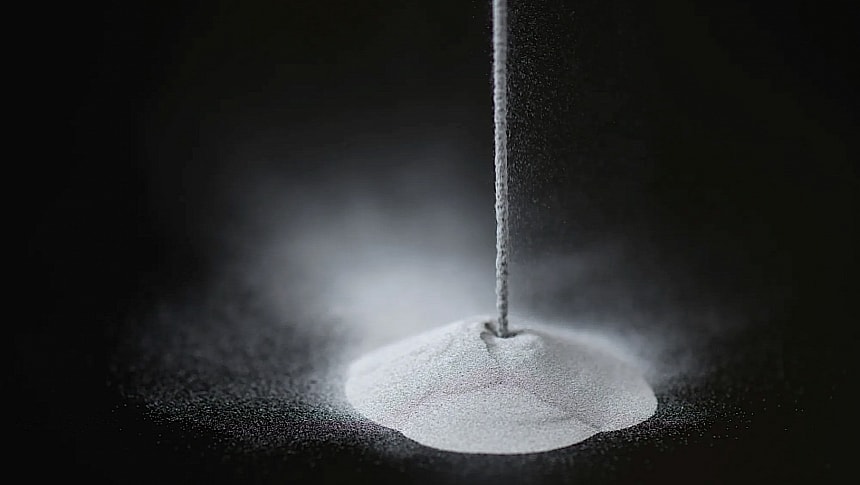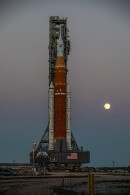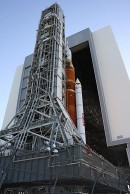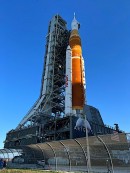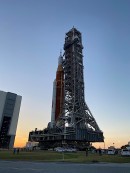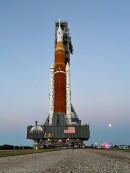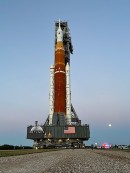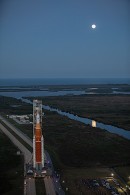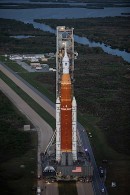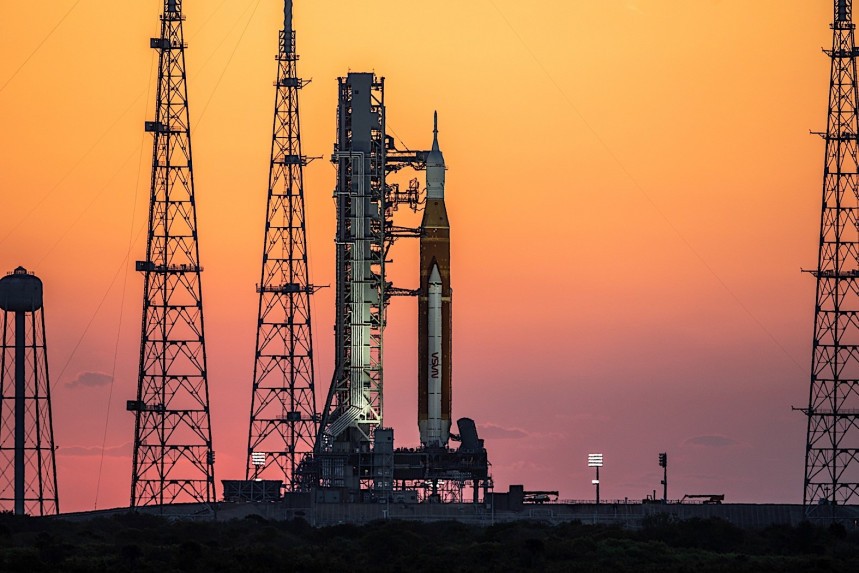Our world is advanced enough for us to believe we've pretty much uncovered all there is to uncover in the realm of materials. Yet, with the recent arrival of new technologies, including the almighty 3D printing, the building blocks of our world seem to be getting better and better.
It was about a year ago when American space agency NASA let the world know it was on the verge of creating a brand new type of alloy. Fueled by its need to come up with better materials for the space exploration tools it uses, from rockets to spacecraft, NASA introduced something called the GRX-810.
The stuff is technically a 3D-printable high-temperature material. For connoisseurs, that would be an oxide dispersion-strengthened (ODS) alloy, but in words the rest of us can understand it's a fancy term than means metals fused together, layer by layer, by means of laser 3D-printing, with tiny particles of oxygen atoms dispersed throughout.
The way the alloy is made may not seem revolutionary at first, but according to NASA and the alloy's inventors, Dr. Tim Smith and Christopher Kantzos from the Glenn Research Center, it's something that was virtually impossible to make just a few short years ago. But what is so special about the GRX-810?
Manufacturing technique aside, the alloy has been designed to allow the building of parts for rockets, spacecraft, and even aircraft, that are a lot better at enduring extreme temperatures and harsh conditions than anything before them. Or, as NASA puts it, we're talking about "stronger, more durable airplane and spacecraft parts that can withstand more punishment before reaching their breaking point."
What does that mean? Well, consider this: the GRX-810 should be able to last no less than 1,000 times longer "than existing state-of-the-art alloys" under high temperatures, meaning heat going above 2,000 degrees Fahrenheit (1,093 degrees Celsius).
To make that clearer, consider other nickel-base alloys. When compared to these materials, the GRX-810 is as per its makers so tough it could last 2,500 times longer. All while being four times more flexible, and twice as resistant to damage caused by oxidation. A super alloy true and true, then.
The space agency initially planned to use the alloy to make parts like liquid rocket engine injectors, combustors, turbines, and hot-section components for aerospace applications, but someone, somewhere, decided the stuff was too good not to be shared with the larger aerospace industry.
So late last week we got word NASA decided to license the alloy to others, so it could be made and used on a larger scale, in both rocketry and aviation, but also in the wider supply chain.
So, as of last week there are four American companies cleared to produce the alloy: Carpenter Technology Corporation (usually a maker of stainless steels and alloys), Elementum 3D (a NASA partner in the Reactive Additive Manufacturing for the Fourth Industrial Revolution/RAMFIRE program), Linde Advanced Material Technologies (maker of materials and coatings), and Powder Alloy Corporation (it's name says it all, really).
NASA hopes that by sharing the secrets of its new super alloy it will help aviation and space exploration become more sustainable. That's because the toughness of the stuff should lead to lower operating costs, and less money spent on replacing parts.
Separately, and perhaps most important, is the fact that in the not-so-distant future parts made using the GRX-810 (let's hope one of those four companies mentioned above comes up with a more user-friendly commercial name for the stuff) could lead to the creation of engines that need less fuel, in both rockets and airplanes, to get the same results as current designs.
To date we only know of a single part made using the GRX-810 alloy, and that is a NASA logo of undisclosed size that was shown for the first time in April 2023 (check gallery for details on that).
Sharing the GRX-810 with American companies is not something new for NASA. As one of the country's premier research agencies, the organization constantly comes up with innovative and, at times, brand-new solutions to various problems.
The agency runs something called the Technology Transfer Program, and over the years it has been responsible for over 2,000 new NASA ideas being put into use in the civilian world. Generally, NASA uses patent licensing to give others access to its work, and the areas its products cover are huge and much broader than the aerospace industry.
Anything from communications to medicine and from optics to mechanical or fluid systems has been researched by the agency over the years.
It's unclear at the time of writing exactly what application the GRX-810 alloy will be used for, or when. But given how the thing is now out and about, don't be surprised if you hear sometime soon about some other space exploration breakthrough, made possible thanks to this new material.
The stuff is technically a 3D-printable high-temperature material. For connoisseurs, that would be an oxide dispersion-strengthened (ODS) alloy, but in words the rest of us can understand it's a fancy term than means metals fused together, layer by layer, by means of laser 3D-printing, with tiny particles of oxygen atoms dispersed throughout.
The way the alloy is made may not seem revolutionary at first, but according to NASA and the alloy's inventors, Dr. Tim Smith and Christopher Kantzos from the Glenn Research Center, it's something that was virtually impossible to make just a few short years ago. But what is so special about the GRX-810?
Manufacturing technique aside, the alloy has been designed to allow the building of parts for rockets, spacecraft, and even aircraft, that are a lot better at enduring extreme temperatures and harsh conditions than anything before them. Or, as NASA puts it, we're talking about "stronger, more durable airplane and spacecraft parts that can withstand more punishment before reaching their breaking point."
What does that mean? Well, consider this: the GRX-810 should be able to last no less than 1,000 times longer "than existing state-of-the-art alloys" under high temperatures, meaning heat going above 2,000 degrees Fahrenheit (1,093 degrees Celsius).
The space agency initially planned to use the alloy to make parts like liquid rocket engine injectors, combustors, turbines, and hot-section components for aerospace applications, but someone, somewhere, decided the stuff was too good not to be shared with the larger aerospace industry.
So late last week we got word NASA decided to license the alloy to others, so it could be made and used on a larger scale, in both rocketry and aviation, but also in the wider supply chain.
So, as of last week there are four American companies cleared to produce the alloy: Carpenter Technology Corporation (usually a maker of stainless steels and alloys), Elementum 3D (a NASA partner in the Reactive Additive Manufacturing for the Fourth Industrial Revolution/RAMFIRE program), Linde Advanced Material Technologies (maker of materials and coatings), and Powder Alloy Corporation (it's name says it all, really).
NASA hopes that by sharing the secrets of its new super alloy it will help aviation and space exploration become more sustainable. That's because the toughness of the stuff should lead to lower operating costs, and less money spent on replacing parts.
Separately, and perhaps most important, is the fact that in the not-so-distant future parts made using the GRX-810 (let's hope one of those four companies mentioned above comes up with a more user-friendly commercial name for the stuff) could lead to the creation of engines that need less fuel, in both rockets and airplanes, to get the same results as current designs.
Sharing the GRX-810 with American companies is not something new for NASA. As one of the country's premier research agencies, the organization constantly comes up with innovative and, at times, brand-new solutions to various problems.
The agency runs something called the Technology Transfer Program, and over the years it has been responsible for over 2,000 new NASA ideas being put into use in the civilian world. Generally, NASA uses patent licensing to give others access to its work, and the areas its products cover are huge and much broader than the aerospace industry.
Anything from communications to medicine and from optics to mechanical or fluid systems has been researched by the agency over the years.
It's unclear at the time of writing exactly what application the GRX-810 alloy will be used for, or when. But given how the thing is now out and about, don't be surprised if you hear sometime soon about some other space exploration breakthrough, made possible thanks to this new material.
